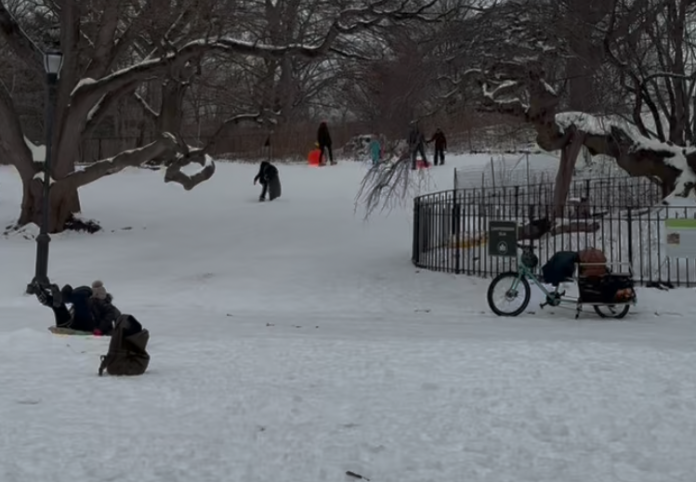First storm: Harlow
A strong winter storm named Harlow is set to bring snow and ice across the Plains, Midwest, mid-Atlantic, and Northeast early this week.
Areas affected
Snow and ice will spread eastward from the Ohio Valley into the mid-Atlantic from Monday night through Tuesday night.
Winter weather alerts have been issued in these regions, warning of hazardous travel conditions, especially on untreated roads.
Cities potentially impacted
Louisville, Lexington, Washington, Baltimore, Philadelphia, and New York City could see significant snowfall and ice accumulation.
Snow and ice accumulation
Snow totals could exceed five inches from the Ohio Valley to parts of West Virginia, northern and western Virginia, central Maryland, Delaware, and southern New Jersey. Lighter snowfall is expected in Philadelphia and New York City.
Parts of western Virginia and southeast West Virginia may experience significant icing, leading to dangerous travel conditions and potential power outages.
Second storm: Iliana
When and where
The second winter storm, Iliana, will develop Tuesday night in the Rockies and spread into the Plains. It will move through the Midwest, Great Lakes, and mid-Atlantic on Wednesday before reaching the Northeast by Thursday. This storm is expected to track farther north than Harlow.
Cities potentially impacted
Denver, Kansas City, Chicago, Detroit, Buffalo, and Boston are in the path of this second major storm.
Snow and ice accumulation
Heavy snow totals of five inches or more are expected from Kansas to northern Missouri, southern Iowa, southeast Wisconsin, northern Illinois, and Michigan.
In northern New York and northern New England, similar heavy snowfall is forecasted. However, parts of southern New England and the New York tri-state area will likely see lighter accumulations.
A third storm this weekend?
A strong Pacific storm is forecasted to hit California later this week and could evolve into another winter storm affecting the Plains, Midwest, and Northeast by the weekend.
This system could bring additional snow and heavy rain to the South, with the possibility of severe thunderstorms.
A common winter pattern
It is not unusual to have multiple winter storms in quick succession during peak winter storm season in January and February.
Cold air from Canada combined with the jet stream’s influence often leads to consecutive storms. Last month alone saw four significant storms between January 4-22, culminating in the record-breaking Gulf Coast Winter Storm Enzo.
January 2024 was even more active, with six winter storms in the first three weeks.
For the latest updates, check weather.com as this active storm pattern continues.




